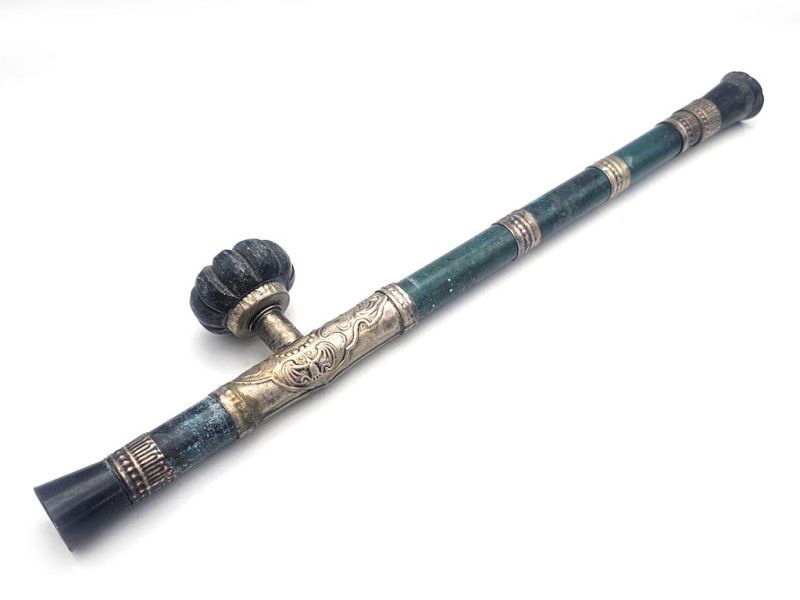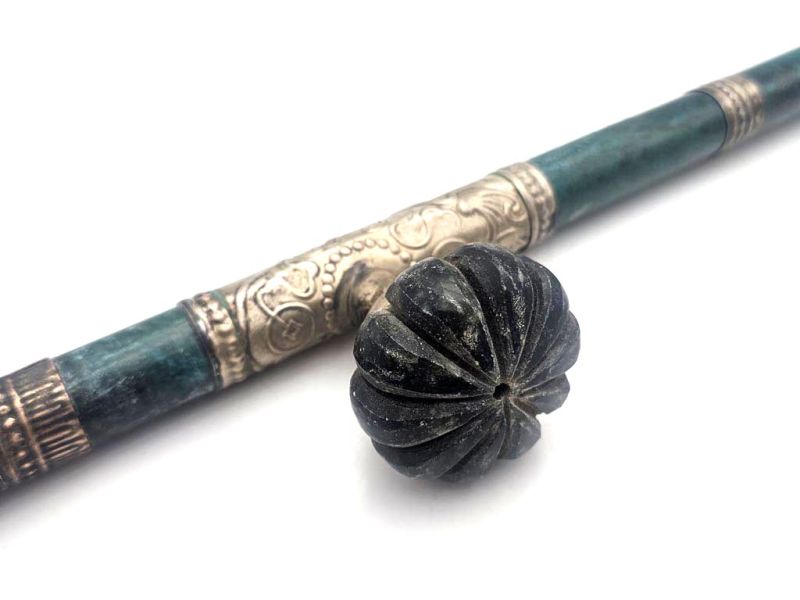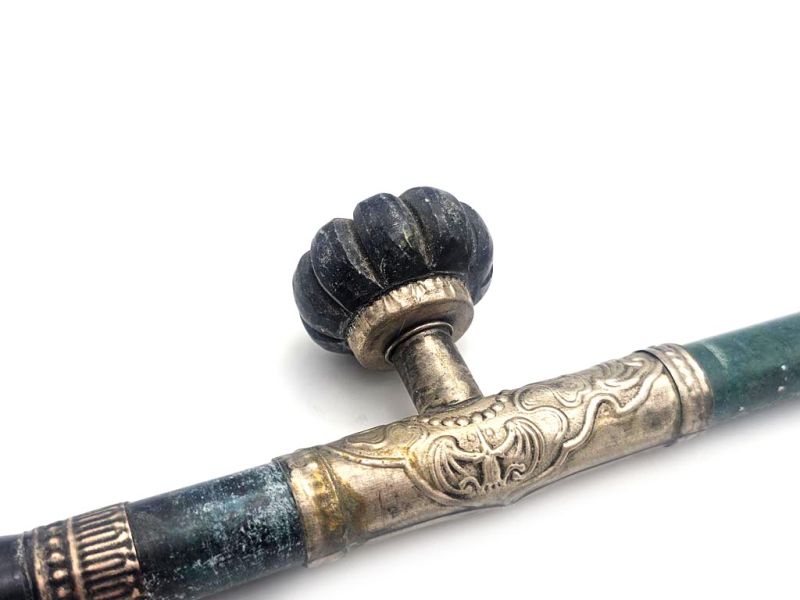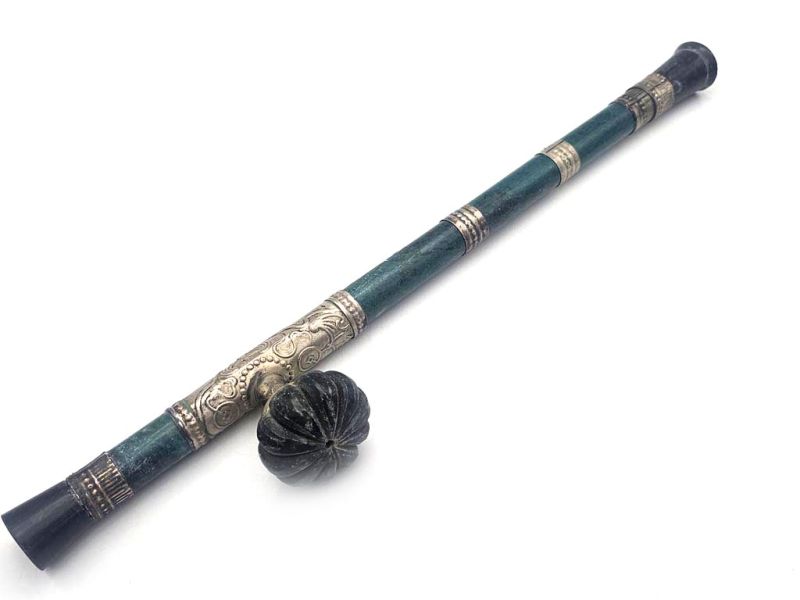Qing‑Style Chinese Opium Pipe – 30Year‑Old Reproduction - Green
Origin and History:
- Emerging at the end of the Qing dynasty (18th–19th centuries), the Chinese opium pipe was used to inhale heated opium resins in a small copper bowl mounted on a long metal or stone stem.
- Elegant salons and tea houses quickly became gathering places for scholars, where consumption was accompanied by literary and philosophical debates.
- A true symbol of social status, these pipes combined noble materials (silver, jade, porcelain) with imperial craftsmanship.
Features and Symbolism:
- Long segmented stem in metal or fine stone, accented with engraved silver bands, ending in a small conical bowl to hold the opium.
- Pipe rest sometimes formed by a dark metal sphere, adding both aesthetic balance and practicality.
- Every detail illustrates the harmony between yin and yang, reflecting the balance cherished by Taoist thought.
Our Reproduction (± 30 Years):
- Model crafted around 30 years ago, faithful to Qing proportions and traditional techniques.
- Green reconstituted stone stem, patinated silver alloy fittings, small copper bowl in antique style.
- Intended for collectors and lovers of Mandarin culture, this piece is not a functional instrument but an object of art and history.
















